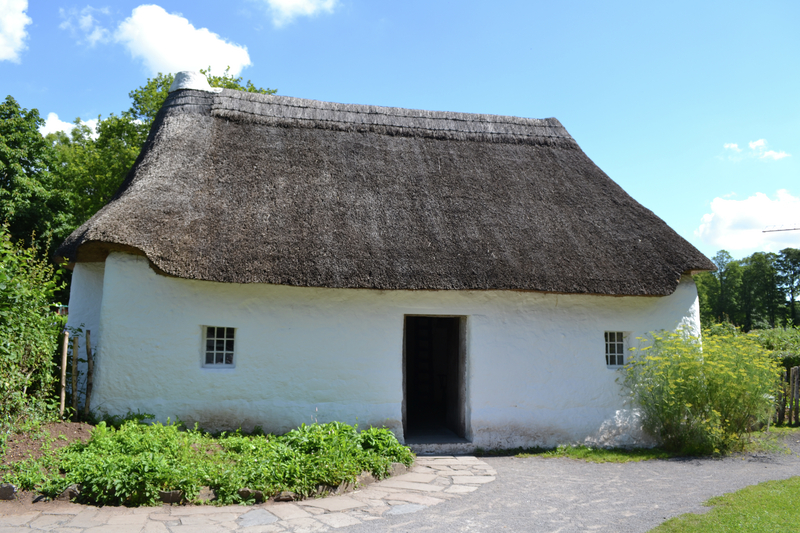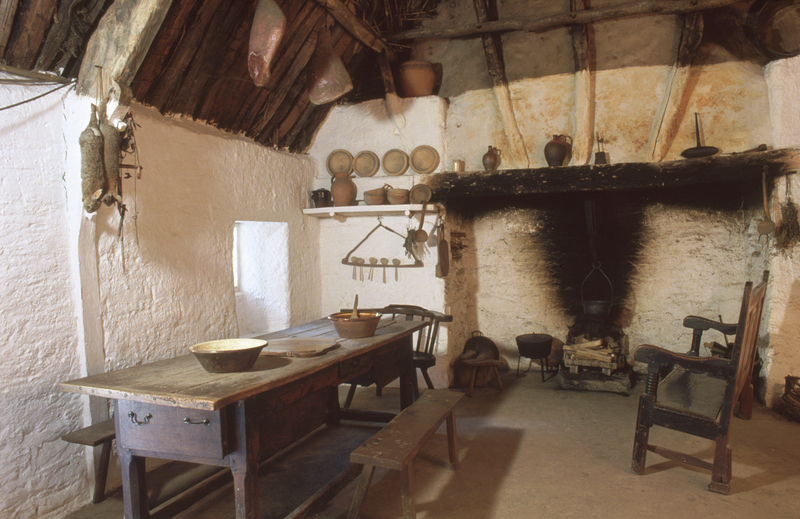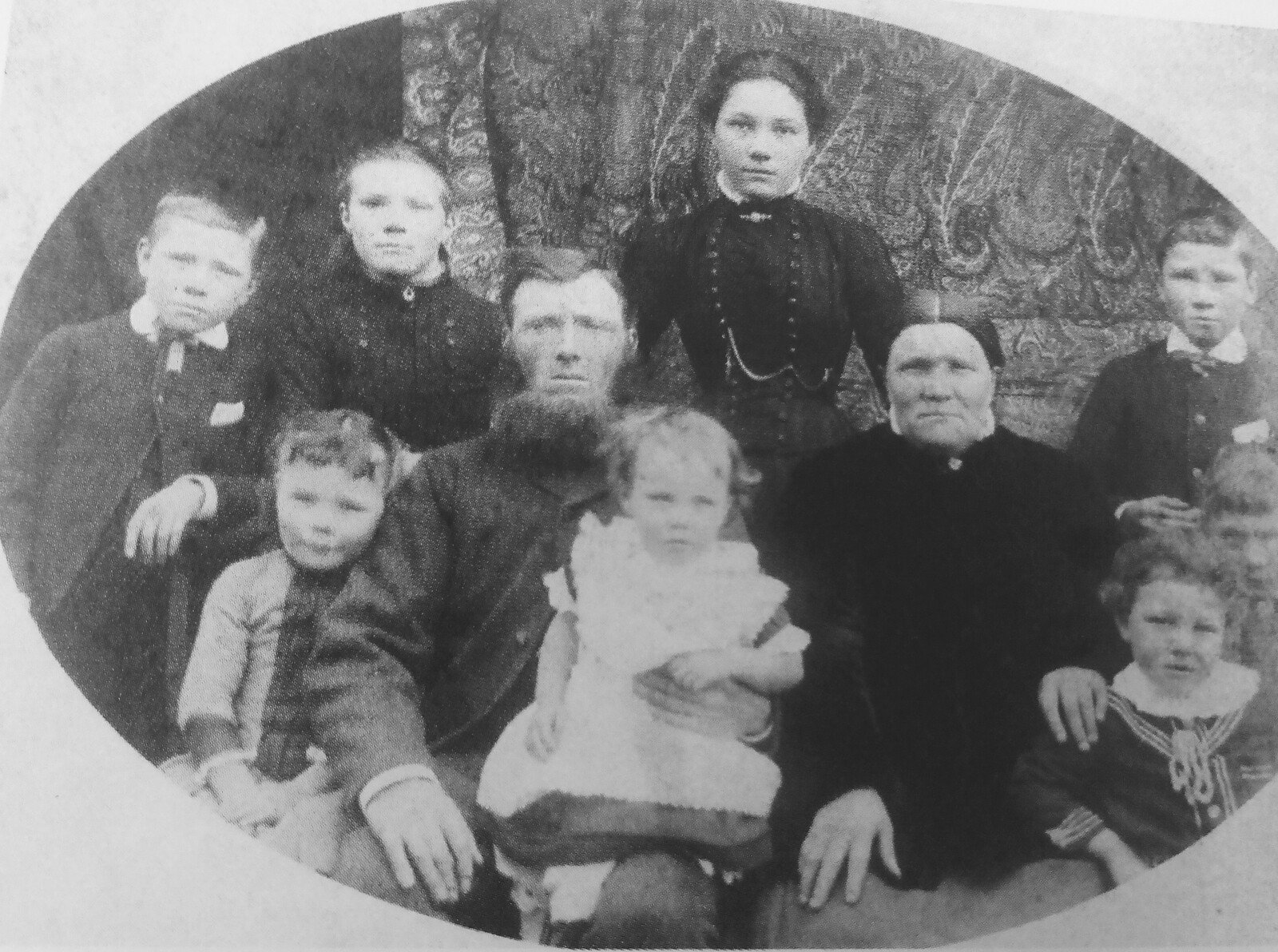Nantwallter Cottage
13

What sort of building is this?
Nant Wallter is a farmworker’s cottage built around 1770 in Taliaris, Carmarthenshire.
The walls of the building are very thick which kept the house cool in the summer and warm in the winter.
They are made of clom. This is a mixture of clay, mud and straw built on stone base. The clom would have been applied in layers with each one being allowed to dry before the next one being applied.
The cottage has a thatched roof which overhangs the walls as easily seen in the photograph. The reason for this is so the rain can run off more easily. The family could not afford a roof entirely of straw so they also used heather and gorse beneath the thatch.
You can see from the photograph that the windows are small as to keep out the bad weather and they would have had no glass.
Inside the cottage

There is one large room inside which the entire family used for their everyday life. At one end is a partition made of wattle i.e. rods weaved with twigs or branches. Behind this was a tiny bedroom for the parents; their children slept in the half- loft or crog loft above it.
There are two wooden crucks which run from the floor up to and across the roof and down the other side. Each are supported by a beam so they look like a giant letter ‘A’.
Peat was burned in the fireplace which made the cottage smoky. It also caused a layer of soot to gather on the furniture.
It took three years to rebuild the cottage at the Museum and it was opened to the public in 1993.
Who lived in the cottage?
We know that the first people to live here were Morgan David Morgan and his family in 1786. Morgan worked on the nearby Taliaris country estate and he was not particularly well paid. He rented the cottage from the estate for about £9 per year. The furniture is of fairly poor quality, and this would have been the case with many labourers’ homes until the agricultural improvements of the 19th century.
By 1886, Evan and Mary Thomas with their eight children were living in the cottage. Evan, too, was a labourer on the Taliaris estate.

The Thomas family
The eldest daughter was called Nan (second right standing at the back). Because she was unmarried, she still lived in the family home. She would have used the spinning wheel to make woollen clothes for the family.
The family depended on the vegetables they grew themselves in the garden outside. This meant that there was food available for them all year even if they had little money.
A pig was kept in the sty outside. This was fattened in the summer and killed in the winter. Its meat would have been salted to preserve it. The bladder would have been removed, blown up and used as a football. Above the sty is a dovecot. The doves were kept for meat and eggs.
Did you know?
Using a pig’s bladder as a ball dates back to Tudor times and was an early form of football. It was later replaced by the cnapan, a solid wooden ball which was slightly bigger than a cricket ball. The game was particularly popular in West Wales when the men of two parishes would play against each other.
Today we use the word ‘spinster’ to refer to a single woman. It originally referred to the oldest unmarried daughter of the house who used the spinning wheel to make clothes for the rest of the family.
The word ‘window’ comes from the Old Norse meaning ‘wind’s eye’.

Building facts:
- Original Location: Taliaris, Carmarthenshire
- Furnished: Late 18th century
- Date originally built: c.1770
- Dismantled & rebuilt at St Fagans: 1990
- Opened to the public: 1993
- Visiting information